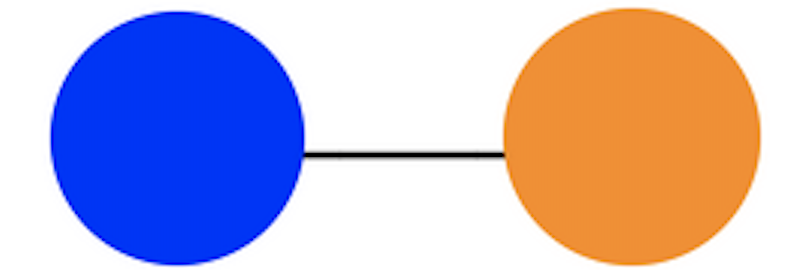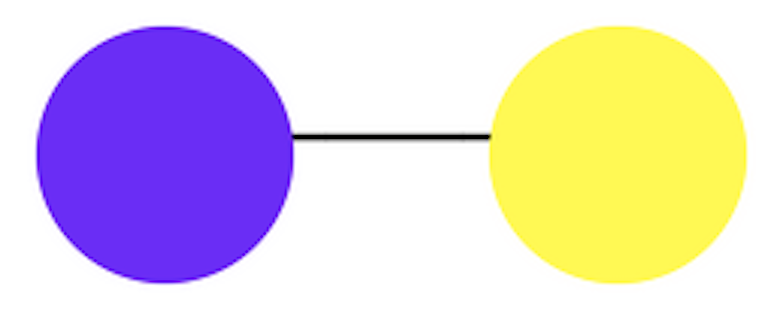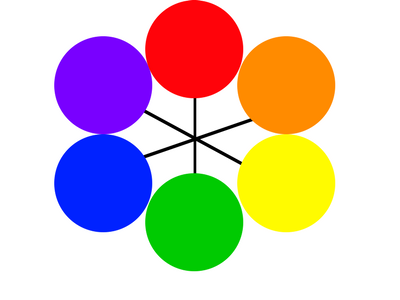Art Concept: Complementary Colors. Complementary Colors are colors that are opposite on the color wheel. These colors vibrate against each other and cause the other to stand out. Artists sometimes use them together to get the viewers' attention or create action, balance or emphasis in a picture.
Teaching note: Have the students name the complementary colors on the color wheel. (red/green, blue/orange, purple/yellow). Using the flag visual experiment to show that the eye naturally vacillates between complementary colors.
Complementary Colors: Colors that appear opposite to one another on the color wheel. These colors compliment one another and are often used together in order to create a strong visual impact (one example is the UW Husky colors). Sometimes also called contrasting colors. If mixed, complementary colors tend to create "muddy" tones such as black, brown, or gray.
Red - Green
.png)
Blue -Orange

Purple - Yellow


Flag Visual Experiment: Have the students stare at the dot in the middle of this flag for ten seconds. Switch to a white screen. They should be able to see the American Flag in Red, White, and Blue as an after-image. You may have to do this a few times. Go through the slides. Have the students name the complementary colors in each of the examples and discuss whether the use of complementary colors is effective.
Book: Hello, Red Fox by Eric Carle. This is a great book of several visual experiments with complementary colors.
.jpg)
The Painter and his Wife, Chagall (French), 1969. Red & green.
.jpg)
Fragment Tomb of Nebamum, Thebes (Egyptian), 1450BC. Blue & orange.
.jpg)
Lessons, Larsson (Swedish), 1898. Red & green.
.jpg)
Vase, Hans Stoltenbergerch, 1912.
.jpg)
Incompatability, Antonio Cabrita (Portugal), 1991. Orange & blue.
.jpg)
Mug, Ottoman, 1550. Blue & orange.
.jpg)
Girl with Kitten, Perroneau (French), 1774. Orange & blue.
.jpg)
View of Hondo, Yakushiji, Nara (Japan) rebuilt 1980s after 730. Orange & blue.
.jpg)
Young Girl Reading Fragonard (French), 1776. Purple & yellow.
.jpg)
Blue Dancers, Degas (French), 1867. Blue & orange.
.jpg)
Fireworks, Hiroshige (Japanese), 1858. Blue & orange.
.jpg)
Poplars, Monet (French), 1891. Purple & yellow.
.jpg)
Karin in the Studio, Larsson (Swedish), 1912. Green & red and blue & orange.
.jpg)
Girl on Balcony (detail), Manet (French) 1868. Red & green.
.jpg)
Arhat Vanasinin, Landscape, Tibet 1700. Blue & orange and green & red.
.jpg)
Martita Huntas as Mad Woman of Challot, Cecil Beaton, 1951. Red & green.
.jpg) Flower Clouds, Redon (French), 1903. Orange & blue.
Flower Clouds, Redon (French), 1903. Orange & blue.
.jpg)
Blue II, Miro (Spanish), 1961.
Orange & blue.
Fueling Success for Every Student, Every School